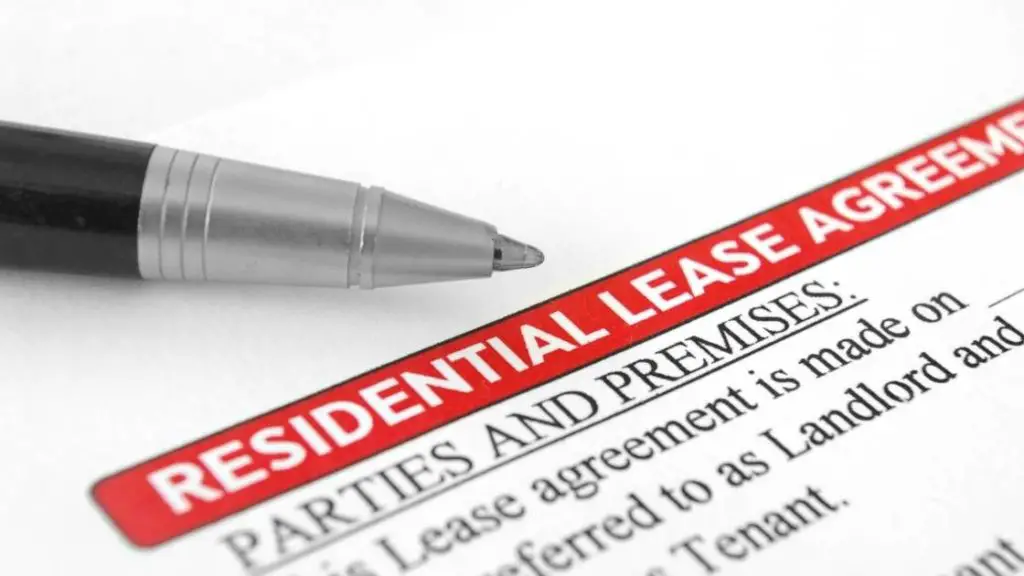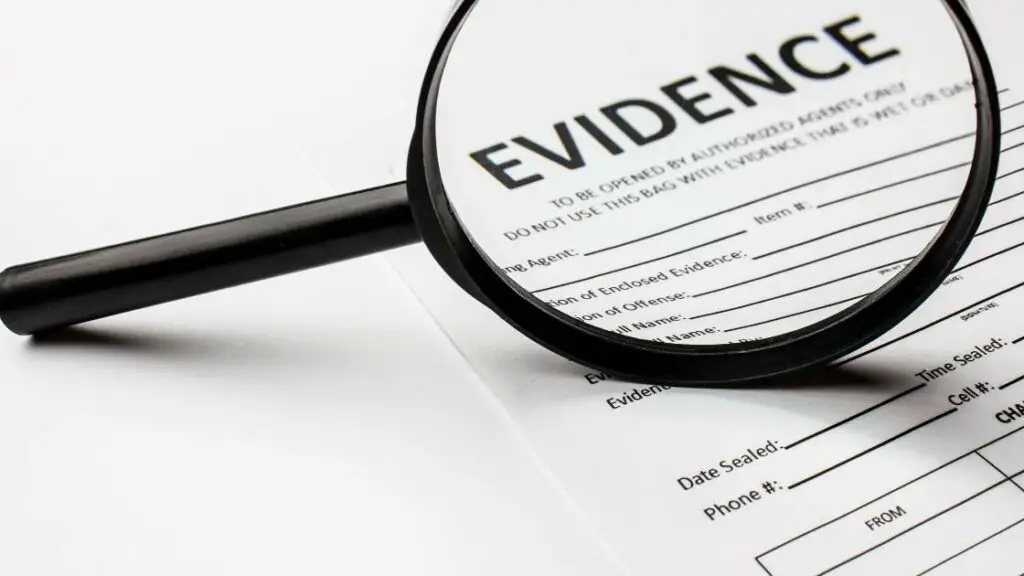If you are a renter who has found mold in your residence and want to terminate your lease because of it, you are in the right place.
In this article, I’m going to discuss whether you can terminate your lease due to mold, and the steps you need to take if you want to pursue this option.
We’ll cover all of this in detail, but here’s the short answer to the general question of whether you can terminate your lease due to mold:
As a general rule, you can break your lease due to mold if it’s serious enough to cause the dwelling to be deemed uninhabitable. In that case, you may have a claim for constructive eviction, which will allow you to terminate your lease early.
The information contained in this post is for informational purposes only. It is not legal advice. You should seek the advice of a qualified legal professional before making any decisions relating to the topics covered by this article.
We may earn commissions from products and services that are purchased or recommended through our website as part of our affiliate partnerships. As an Amazon affiliate, we may earn from qualifying purchases.
What is Mold and Which Types Are Most Alarming?
Mold is a fungus that produces mold spores that spread throughout an area in a semi-nonlinear pattern. There are over 100,000 species of mold that grow both indoors and outdoors.
Mold requires moisture to grow and is usually found near showers and refrigerators, as well as under carpets and around ceiling tiles. A large amount of mold can form after a flood and that can cause health issues and property damage.
One of the worst types of mold is black mold. It can cause serious health issues and should be addressed immediately.
Can I Break My Lease Due to Mold?

You can typically break your lease due to mold if it has made your dwelling uninhabitable. Most states have adopted an implied warranty of habitability, which basically promises that your premises will be livable, safe and sanitary. This applies regardless of whether your lease expressly states that or not.
But before you explore your state and local laws, make sure to check your lease first.
It may contain specific provisions around mold remediation and who is responsible for what. If the terms are favorable to you, then you can ask the landlord to abide by them. If they are not, don’t lose hope. You may still have recourse under the applicable landlord-tenant laws.
Now, as I mentioned earlier, different states may tackle the issue of mold differently, so it definitely makes sense to check the laws that would apply to you (or better yet, consult with a qualified lawyer who is familiar with those laws).
If you prefer to have a lawyer assist you, I would try JustAnswer. They boast access to thousands of highly-rated, verified real estate lawyers whom you can connect with via their unlimited chat service.
By clicking the banner below, you can get a one week trial membership for only $5, which you can cancel at any time.

But to give you a sampling of how certain states have addressed the issue, I will share how New York, California and Virginia have handled the issue of mold and when it can give rise to a right to terminate a lease.
New York Law
New York recognizes the implied warranty of habitability.
So if a dwelling is not habitable, then courts may find that the tenant has been constructively evicted and will no longer be responsible for paying rent under the lease agreement. Source. Of course, proper notice to the landlord and an opportunity to remedy should be given.
If the landlord is willing to remediate the mold, then a temporary relocation while the mold is being corrected may also be an option.
According to Manhattan attorney, Sam Himmelstein, if you are constructively evicted due to mold, then you should be relieved from paying rent while the premises is uninhabitable and you may be entitled to moving expenses. Source.
For a detailed look on relocation due to mold and when it is required, check out my article on the topic here.
California Law

Let’s turn now to California. Like New York, California also recognizes the implied warranty of habitability.
According to the California Housing Code, the presence of visible mold growth, as determined by a health officer or a code enforcement officer can make a dwelling “substandard” if it’s a danger to the health of occupants.
Of course, there is an exclusion for mold that is minor and found on surfaces that can accumulate moisture as part of their properly functioning and intended use.
If the dwelling is deemed “substandard” due to mold, the owner must remediate it. If the landlord fails to do so in a timely manner, the tenant may terminate their lease and relocate to another property.
If the landlord is willing to fix the issue, the tenant may have recourse for relocation expenses while that is happening.
For example, if you happen to live in Los Angeles County, the landlord must cover relocation expenses if a tenant is “temporarily displaced” (and it even lays out the amounts based on dwelling size). Source.
A tenant is temporarily displaced if they must temporarily leave their unit for one of the following reasons, until the issue is resolved:
- Necessary repairs
- Rehabilitation (Major upgrades/repairs that increase value to the property)
- Health and safety violations or
- Work that cannot be completed while the tenant remains in the unit.
Mold issues could be covered under both the third and fourth bullet points.
Obviously, if the mold issue is serious enough, it could constitute a “health and safety violation.” And if the remediation is extensive, that work may not be able to be completed while the tenant remains in the unit.
Virginia Law
Let’s switch to our final jurisdiction. Virginia’s laws include mold requirements that impose duties on both landlords and tenants.
Landlords have a general obligation to maintain the premises so as to prevent the accumulation of moisture and the growth of mold, and promptly respond to any notices from a tenant relating to mold issues. And if they find visible evidence of mold, they must promptly fix it. Code of Virginia § 55.1-1220.
But tenants have obligations too.
Tenants must use reasonable efforts to maintain the dwelling in such a condition as to prevent the accumulation of moisture and the growth of mold. They must also promptly notify the landlord of moisture accumulation that occurs or any visible evidence of mold that they discover. Code of Virginia § 55.1-1227.
It’s also worth noting that the landlord does not need to pay for the mold remediation if the mold was caused by tenant’s failure to maintain the premises in a way that prevents mold growth (see citation above). In this situation, the tenant will not have the right to break the lease early.
But (i) if the mold is not the tenant’s fault, (ii) the landlord has been notified of the issue, and (iii) the landlord fails to remediate the mold in a timely manner, then a tenant may be entitled to terminate the lease early. Source.
What Steps Do I Need to Take if I Want to Break My Lease Due to Mold?
Here’s the typical process you’ll want to follow before breaking the lease:
Go Over Your Lease
As mentioned earlier, go over your lease carefully to see if mold issues are addressed there.
Know What Your Rights Are
The next steps is to understand your state and local laws governing mold remediation. Check the laws that will be applicable to your situation and see if they have anything regarding mold.
If the situation is serious and you need help analyzing the lease and the applicable laws, you should contact a qualified lawyer to help you.
Now that you know what your lease and laws state, you need to assess whether it make sense to pursue a claim against your landlord for remediation or an early lease termination. Assuming that it does, let’s move on to the next step.
Get Proof

You need to have proof of the existence of mold in your residence. Make sure to take pictures of the mold and write down the first day that you saw the mold, where you saw it, and additional details of the situation.
If any neighbors are also experiencing the same thing then write down their experience as well.
Let the Landlord Know
Have your records ready to present to the landlord. Be very specific about the problem and let them know how severe it is.
Let them know what you’ve done about it so far and what you expect them to do.
Make them give you an exact deadline for the repairs to be finished. Give them a follow up correspondence that confirms that they agreed to make the repair by the date they gave you.
If the Landlord Does Not Properly Fix the Mold Problem, Give Notice of Lease Termination
If your landlord does not meet the deadline or he does not agree at all, then, assuming your lease and landlord-tenant laws justify this, you can provide written notice to your landlord of your intent to leave the dwelling and terminate the lease.
You want to make sure you get this right, or you could face liability for terminating a lease when it was not justified. Again, talking with a lawyer makes sense if you plan on taking it this far.
What If the Lease and Landlord Tenant Laws Don’t Support Early Termination of My Lease?
If the lease and your landlord-tenant laws don’t support you terminating your lease early, you can try some of these alternative methods for addressing the mold issue.
Self Help

One option is to try to remediate the mold issues on your own.
You basically have two ways to do this. You can remove the mold yourself or you can hire a qualified mold remediation company.
As a general rule, mold that is less than 10 square feet in size can be done by yourself. The key is to solve the root cause of the moisture that is spawning the mold.
Here are some key steps you can take to remove mold by yourself.
- Fix any leaks or other causes of excessive moisture as soon as possible and dry the area completely.
- Diligently scrub any mold off of anything in the area (you can use any of the mold removal products out there like Tilex, etc.) and make sure it is fully dry after you are done. Ensure that the product contains both a fungicide (which kills the fungus) and a mildewstat (which helps prevent the regrowth of mold and spores)
- You may have to get rid of ceiling tiles or carpet where the mold has absorbed into its surface.
- Make sure to wear clothes that can be thrown away after the cleaning.
- Don’t paint over it because it will later peel and expose the air to mold again.
If the mold situation is beyond your ability to fix, then you will need to hire a professional mold remediation company. Bear in mind that professional mold remediation can be quite costly, depending on the scope and seriousness of the mold infestation.
If you have to spend money on remediating the mold, you may want to see if your state laws allow you to use the ‘”repair and deduct” method. If this option is available, you can deduct the costs that you incur from your next rent payment.
If not, you always have the option of pursuing a lawsuit against your landlord for the costs associated with remediating the mold. If you do this, you want to make sure you did everything right on your end (e.g., the mold is not due to your actions or inactions, you provided notice of the issue to your landlord, they failed to fix it in a timely way, etc.).
Whether you choose to file an action or not, you will want to keep meticulous records of all communications with your landlord, as well as any evidence of the mold infestation (including photos, etc.).
Explore Other Early Termination Options
If terminating the lease is not an option under the law, you may want to negotiate with your landlord about early termination anyway. In many cases, a landlord may be willing to allow you to leave if you pay a modest early termination fee (which could include some portion of your security deposit).
Another fine option is to see if they would be willing to let you out of the lease if you can find a new (and suitable) tenant for them to take over the lease or sign a new lease. I have written a full article on how you can do this here.
As a final resort, you may want to leave the unit and risk being on the hook for the remainder of the rental payments under the lease. In most jurisdictions, the landlord is required to mitigate damages by trying to find a suitable replacement tenant. Once they do, you will no longer be on the hook for your lease.
Bear in mind that, although they are obligated to try to find a replacement tenant, they may not be able to do so quickly (or at all) if the rental market is soft. That means you will be on the hook for any remaining rental payments under the lease until they can do so. That could be a lot of money if you have a long time left on your lease.
Another risk of breaking your lease like this is that a landlord may report any non-payment of rent to credit reporting agencies and take you to court. These actions can have a serious and negative impact on your credit score, which could affect your ability to rent a new place in the future.
It’s a gamble, so you should only use this as a last resort, but it might be better than living in a home that is dangerously unsafe (especially if the landlord is not willing to fix the mold issue and you can’t afford to do it yourself).
But before you choose this final option, consider whether there are any other grounds for termination that we haven’t covered already.
Check out my full article on how to break your lease early without penalty for more details. It includes 11 situations where you can terminate early (plus one bonus option that applies in all situations).
Conclusion
Dealing with mold can be awful, but the good news is that you may have some options.
Assuming you did not cause the mold, and the mold infestation is serious enough, you may have some strong claims that the landlord has to fix it.
If that doesn’t work, you may be able to break your lease early under the argument that the premises is uninhabitable. And as a last resort, you can explore some of the self-help and alternative termination options we highlighted above.
Again, the lease and the law will ultimately govern the outcome, so make sure you examine both carefully.

